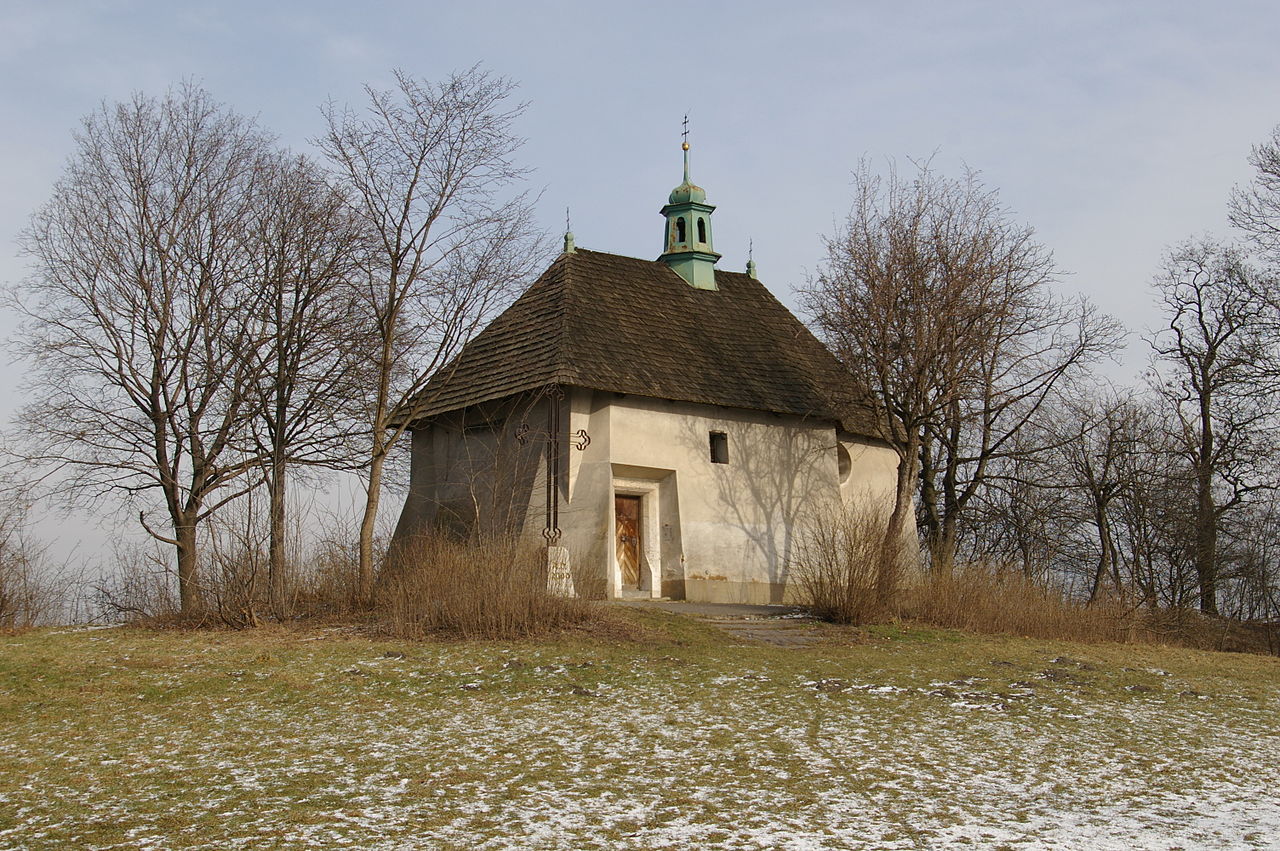 Kościółek św. Benedykta
Kościółek św. Benedykta
Gęste mgły tajemnicy przysłaniają dzieje tej starej świątyni. Prawdopodobnie do jego budowy w XIII w. przyczynili się benedyktyni z Tyńca, którzy byli właścicielami gruntów na Krzemionkach, ale powstała też hipoteza, że wcześniej istniał jako własność norbertanek zwierzynieckich. Prawdziwą sensacją okazały się wyniki prac wykopaliskowych, prowadzonych w latach 60., potwierdzające, że w bardzo zamierzchłym średniowieczu (X lub XI w.) w miejscu kościółka stała wczesnoromańska rotunda zbudowana z płasko łupanych elementów piaskowych układanych na zaprawie gipsowej. Wnioski z badań posunięto jeszcze dalej, sugerując, że owa rotunda pełniła rolę kultową w zespole wczesnoromańskiej siedziby książęcej. Na tej podstawie można by sądzić, że pierwotne zabudowania na Krzemionkach były, podobnie jak Wawel, siedzibą władzy świeckiej i duchowej, ale o mniejszym znaczeniu. Pierwsza odnotowana w dokumentach odbudowa kościółka miała miejsce w 1589 r., zaś w 1605 r. patronat nad nim przejęli duchacy, czyli zakonnicy od św. Ducha – stąd podwójny krzyż na barokowej sygnaturce, nawiązujący do krzyża tego właśnie zgromadzenia. W czasach zaborów pod rządami Austriaków świątynia podupadła i stoczyła się w ruinę. Dopiero w połowie XIX w. dzięki staraniom ówczesnego proboszcza, ks. Komperdy, przybytek pod wezwaniem św. Benedykta został odnowiony.
Obecny wygląd kościółka nosi cechy XVII-wieczne; jest on naprawdę niewielki, z daleka przypomina grubaśny grzyb, którego rozrośniętą nogę przykrywa ciemny kapelusz. Wysoko nad drewnianymi drzwiami od południa znajduje się kilka niemalże strzelniczych okienek. Bielone mury wspierane są przez odstające szkarpy z cegły. Całość wieńczy ciemny dach gontowy. Niestety, zwiedzanie ogranicza się zazwyczaj do oglądnięcia obiektu z zewnątrz, gdyż msze święte odprawiane są tu tylko dwa razy do roku: w dzień św. Benedykta i podczas odpustu zwanego Rękawką, czyli w pierwszy dzień po Świętach Wielkanocnych.
Zachodni stok góry, na której stoi kościółek św. Benedykta, określano nazwą Na Zbóju. Od 1651 r., kiedy wykonano tu egzekucję na wodzu powstania chłopskiego, Aleksandrze Kostce Napierskim, Na Zbóju kojarzy się jako miejsce straceń. Nazwa ta nawiązuje także do starej jak Kraków tradycji rabowania kupieckich karawan, bo podobno stąd właśnie najczęściej dokonywano napadów.
Legenda o zaklętej księżniczce, przypisana do miejsca, gdzie stoi kościółek św. Benedykta, jest mroczna i bez happy endu. W bardzo dawnych czasach stał tu wspaniały pałac, a w nim mieszkała znana ze swego okrucieństwa piękna księżniczka. Z taką bezwzględnością gnębiła swój lud, że za karę grom z jasnego nieba strzelił w nią podczas rozpustnej uczty. Księżniczkę pochowano w podziemiach kościółka, ale nie dane jej było zaznać spokoju wiecznego. Za swe ciężkie przewinienia błąkała się nocami po wzgórzu, błagając napotkanych ludzi o pomoc. Ale tylko jedna rzecz mogła wybawić nieszczęsną: jakiś człowiek musiałby w przeciągu określonego czasu wydać określoną sumę talarów tylko i wyłącznie na swoje doraźne potrzeby: na jedzenie i picie. W nagrodę otrzymałby wielki skarb, a księżniczka odnalazłaby wreszcie spokój w grobie. Po wielu latach, dzięki litościwym staraniom lokalnego pustelnika, znalazł się śmiałek gotowy podjąć wyzwanie. Wszystko szło mu dobrze do ostatniego talara: zmęczony wielodniowym pijaństwem i obżarstwem odruchowo oddał ostatnią monetę jakiemuś żebrakowi. Oczywiście tym żebrakiem był sam diabeł, który tylko czyhał, aby śmiałkowi oderwać głowę, a złej księżniczce pogratulować następnych 500 lat tułaczki pod postacią widma. No I skarby też przepadły, podobno leżą zakopane gdzieś na Krzemionkach i czekają na frajera. Powodzenia!